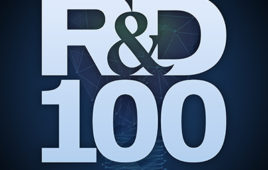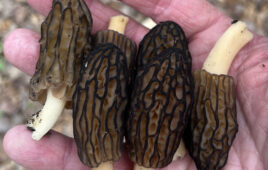NEW YORK (AP) – Forest Laboratories Inc. said its net income jumped in the fiscal fourth quarter compared to last year, when it made a large payment to AstraZeneca PLC to get the rights to a potential antibacterial drug cocktail.
Forest said its profit jumped to $322.5 million, or $1.12 per share, in the three months ended March 31. A year ago the company earned $22.6 million, or 7 cents per share, including a license payment that reduced its profit by 76 cents per share. Revenue rose 8 percent to $1.14 billion from $1.06 billion.
Analysts expected a profit of $1.06 per share and $1.11 billion in revenue, according to FactSet.
The company said sales of its depression and anxiety drug Lexapro rose 7 percent to $594.8 million and sales of Alzheimer’s disease drug Namenda grew 11 percent to $329 million. Revenue from its high blood pressure drug Bystolic sales grew 38 percent to $73.1 million while sales of the fibromyalgia drug Savella grew to $23.7 million from $17.4 million. The company reported $2.7 million in revenue from Teflaro, an antibiotic which it launched in March.
Forest said its fiscal 2011 profit grew 53 percent to $1.05 billion, or $3.59 per share, up from its 2010 total of $682.4 million, or $2.25 per share. Revenue grew 5 percent to $4.42 billion from $4.19 billion.
Its results in fiscal 2010 included three large licensing payments, among other items. Its profit in 2011 was reduced by licensing payments and a charge of 39 cents per share after the company agreed to pay $313 million to resolve allegations of illegal marketing and distributing a drug before it was approved. Excluding one-time items, Forest said its profit rose to $4.41 per share from $3.51 per share.
The patents supporting Lexapro will start to expire on March 14, 2012, opening the way for cheaper generic versions to reach the market. The competition will hurt Forest’s sales, and the company has been developing new drug candidates and acquiring others to boost its revenue. A year ago, Forest paid AstraZeneca $229 million to get the rights to the antibiotic ceftazidime and the drug candidate NXL104, which is designed to make antibiotics more effective. Forest also struck a marketing deal with AstraZeneca, and the companies will market a combination of Forest’s antibiotic Teflaro in combination with NXL104.
Earlier this year Forest paid $1.2 billion to acquire Clinical Data Inc. and Viibryd, a depression drug Clinical Data developed. Viibryd was approved in January and Forest expects it to reach the market by the end of June. The company is also partnering with Almirall SA on the lung disease and asthma drug aclidinium.
The company said it expects its profit to decline to $3.60 to $3.70 per share in the current fiscal year because of costs associated with the federal health care reform law and expenses related to the launches of Viibryd and lung disease treatment Daliresp. It forecast revenue of $4.5 billion. Forest said sales of Lexapro will fall about 10 percent to about $2 billion and revenue from its high blood pressure drug Benicar will slide 23 percent to about $119 million.
The company said annual sales of Namenda will rise 10 percent, implying a total of around $1.43 billion. It said Bystolic revenue will grow 35 percent to around $357 million and Savella sales will rise 31 percent around $118 million. Forest also expects $60 million in Daliresp sales, $45 million in Viibryd revenue, and $40 million in Teflaro sales.
Analysts expect a profit of $4.04 per share and $4.59 billion on average.
“We believe there is going to be a very healthy life after the loss of Lexapro for our company,” said Forest Chairman and CEO Howard Solomon.
On Tuesday the company said it will acquire an anti-arrhythmia drug candidate called azimilide from Blue Ash Therapeutics. Forest will conduct the final late-stage clinical trial of the drug. Azimilide was developed by Procter & Gamble Co. Warner Chilcott later acquired P&G’s prescription drug business and sold the rights to azimilide to Blue Ash in January 2010.
Terms of the deal were not disclosed, but Forest said it will make an upfront payment, along with future milestone payments if the drug is approved. Warner Chilcott will also receive royalty payments if azimilide is approved. Forest said the drug has patent protection until at least 2012, but other patent applications have been filed.
Forest said it expects a profit of at least $1.20 per share in fiscal 2013, the first fiscal year after Lexapro goes generic. Analysts expect $1.25 per share on average.
Date: April 19, 2011
Source: Associated Press




